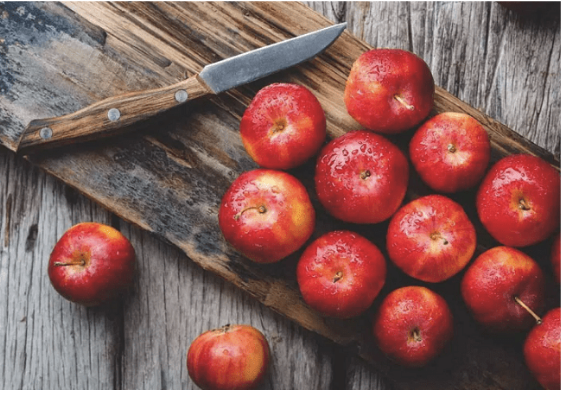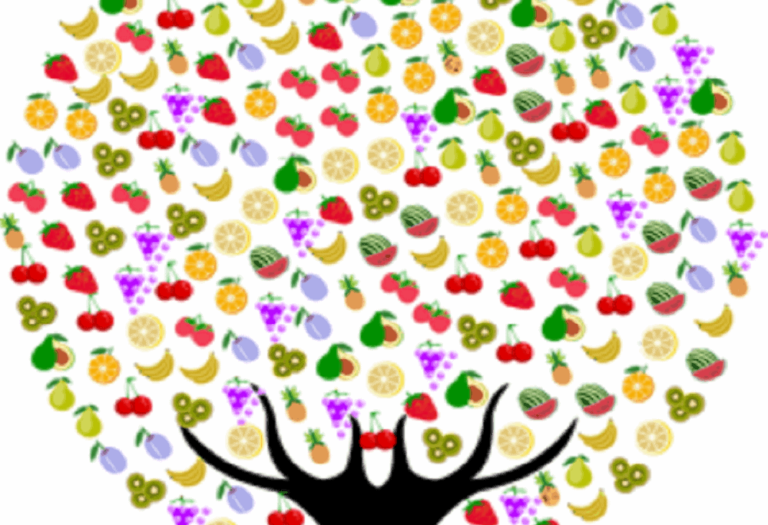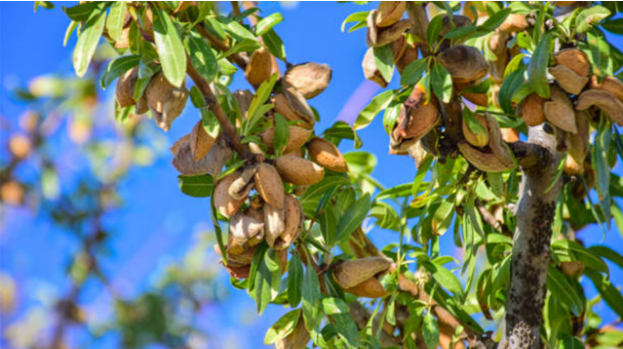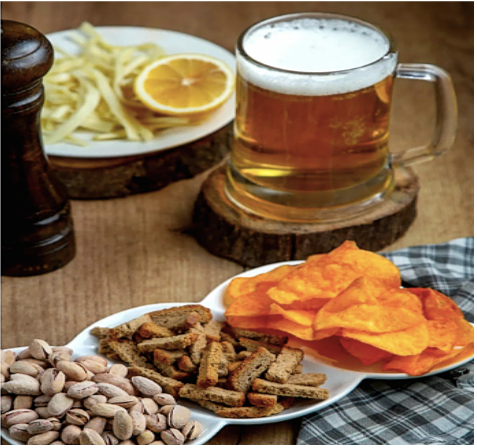Your cart is currently empty!
Nutritional Benefits Of Apples
Apples, which originated in eastern Europe and southwestern Asia, have long been considered a healthful food that is readily available in most temperate climates. There are a seemingly endless number of varieties. In fact, there are now about 7,000 different types of apples throughout the world.
Even dried apples have reasonable amounts of soluble and insoluble dietary fiber and vitamin C. They contain many phytonutrients, such as quercetin, catechin, phloridzin, and chlorogenic acid, that act as antioxidants. So, they support cardiovascular health. Most of these beneficial chemicals are located within the apple skin.
The nutritional benefits of apples are contained in the pulp, and the skin contains flavonoids. Flavonoids are helpful for inflammation, clot prevention, blood pressure, and lowering fat production in liver cells.
Moreover, apples’ nutritional benefits have an association with reducing the risk of cancer and protecting against asthma. But what else have researchers learned?
Cardiovascular Health

In a study published in 2007 in The Journal of Nutrition, researchers at the University of Utah studied the use of 730 mg of quercetin supplementation in 19 men and women with prehypertension and 22 men and women with stage 1 hypertension. No changes were seen in the subjects with pre-hypertension. Quercetin supplementation has an association with a reduction in systolic, diastolic, and mean arterial pressure in subjects with stage 1 hyper tension. The researchers believe that quercetin lowers blood pressure because it blocks the effects of a chemical that causes the constriction of blood vessels. In effect, it causes blood vessels to dilate.
Metabolic Syndrome Prevention
In a study published in 2008 in The FASEB Journal, researchers used data from the National Health and Nutrition Examination Survey (1999-2004) to review the association between apples and apple products (apple juice and applesauce) and metabolic syndrome in adults. Their results were note worthy. Adults who regularly ate apples and apple products-the equivalent of about one medium apple per day reduced their risk for metabolic syndrome by 27 percent. Metabolic syndrome is a cluster of medical problems, including insulin resistance, abnormal blood fat, and borderline or elevated blood pressure. These problems have a link to chronic illnesses such as cardiovascular disease and diabetes. Regular consumers of apples and apple products tended to have lower blood pressure readings, lower C-reactive protein levels, and smaller waistlines than those who were not frequently.
Commenting on the study, a 2008 article in Psychology Today noted that
apples contain the soluble fiber pectin, which lowers fats in the body, including cholesterol. Apples also have an “array of phytochemical antioxidants.” which helps to prevent blood fats from hardening. Most anti oxidants and insoluble fibers find in the peel, but pectin is located in the flesh. “Neither the pectin alone nor the phytochemicals alone (or anyone phytochemical) is as effective as the combination of fiber and antioxidants.” Or, the quote from the study’s lead author, “It seems to be one of those situations where the whole is greater than the sum of its parts.”
Nutritional Benefits Of Apples And Cancer Research
In a study published in 2009 in The FASEB Journal, British researchers from the Institute of Food Research in Norwich determined that in laboratory research, pectin binds to and may inhibit a protein that fosters the spread of cancer throughout the body. Specifically, some sugars in pectin attach to a protein known as Galectin-3 on the surface of tumor cells. Galectin-3 helps the tumor cells grow and spread. When pectin binds to Galectin-3, it inhibits growth and may reverse the spread of cancer cells.
In a study published in 2009 in the Journal of Agricultural and Food Chemistry, Cornell University researchers explained that fresh apple extract inhibited the size of mammary tumors in rats. Furthermore, as the number of sections increased, so did the amount of inhibition. Only 23 percent of the rats fed the most significant amount of apple extract, the equivalent of humans eating six apples per day, developed mammary tumors. That stands in sharp contrast to the 81 percent of rats who developed tumors in the control group. Not only did the treated animals have fewer tumors. Their tumors were smaller, slower growing, and contained fewer malignant cells. The researchers noted that the “results demonstrate the full capacity of fresh apples to suppress mammary cancers in rats.
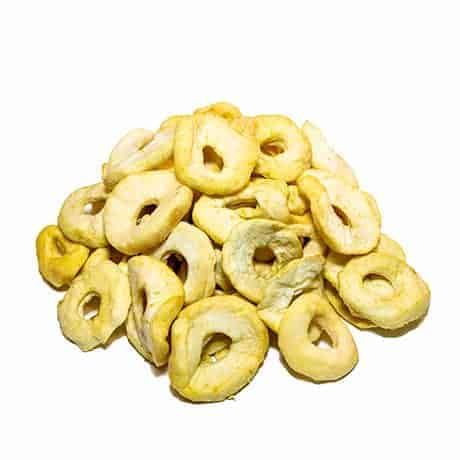
Lowers Susceptibility To Influenza
A vital study was published in 2008 in the American Journal of Physiology: Regulatory, Integrative, and Comparative Physiology. Researchers from South Carolina investigated quercetin’s effects on mice’s influenza status. They would assign the mice randomly into one of four groups. On three consecutive days, two groups exercised on a treadmill for about 140 minutes. Only one group of runners received quercetin. The other two groups of mice did not exercise. Only one group of non-exercise mice received quercetin. All of the mice were intranasally (within the nose) inoculated with the standard and well-known influenza virus HlNl.
The study yielded the following findings:
- Excessive exercising increases the susceptibility to flu. The mice that exercised until they were fatigued were far more likely to become ill with the flu.
- Mice that exercised became ill with the flu sooner than those who did not exercise.
- All the mice that exercised and took quercetin became ill at about the same rate as those that did not exercise.
- The mice that did not exercise and those that exercised and took quercetin had about the same symptoms.
The researchers concluded that the data indicated “that short-term quercetin feedings may prove to be an effective strategy to lessen the impact of stressful exercise on susceptibility to respiratory infection.”
Protect The Stomach From Aspirin Therapy
In a laboratory rat study published in 2008 in the British Journal of Nutrition,
Italian researchers attempted to determine if polyphenol extracts from apples could protect the stomach from ulcers. These ulcers were studied as other complications that are associated with aspirin therapy. The rats were divided into two groups. One received apple polyphenol extract-the equivalent of about two apples per day for a human-before aspirin therapy; the other group received no pre treatment. The researchers found that macroscopic and microscopic stomach injuries dramatically reduced when rats ate apple polyphenols before aspirin therapy. They concluded that apple polyphenol extract “might be of therapeutic use in the prophylaxis of aspirin-related gastropathy.”
Improve Strength
In a study published in 2007 in Medicine & Science in Sports & Exercise, researchers divided sixteen 11-week-old male rats into two groups. One group was fed a diet that included apple polyphenols; the other group, the control, had no apple polyphenols. The study continued for three weeks. In truly striking findings, compared to the control rats, the rats that ate the apple polyphenols had almost a 100 percent increase in muscle strength in their gastrocnemius muscles. (The gastrocnemius muscles are the muscles in the back of the legs. Making up the more significant part of the calf.) In addition, they dropped body fat and experienced less muscle fatigue.
Extra Knowledge

Apples grow mostly on farms using lots of pesticides. Consumers have learned to avoid these chemicals by washing the apples and peeling the skin. However, the nutritional benefits of apple skin include adding fiber, quercetin, and flavonoids. It would be best to keep the skin in our diet. To avoid pesticides, it is best to eat apples that grow organically. And, eat lots of them as part of the diet.
Love dried fruits? Find out about The Nutritional Benefits of Blueberries here.

